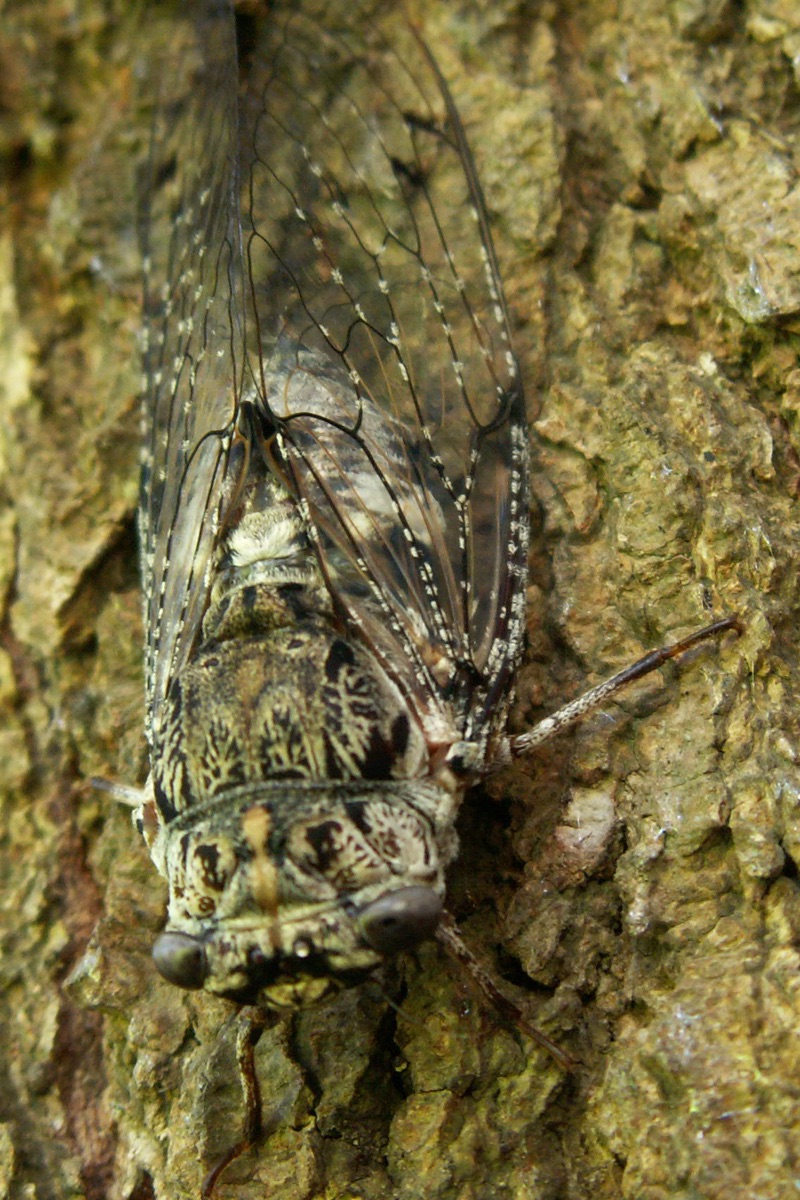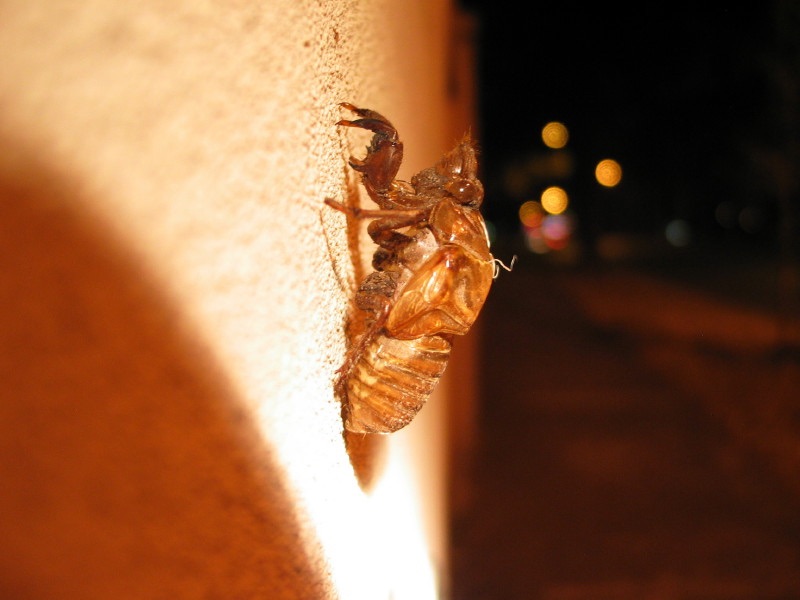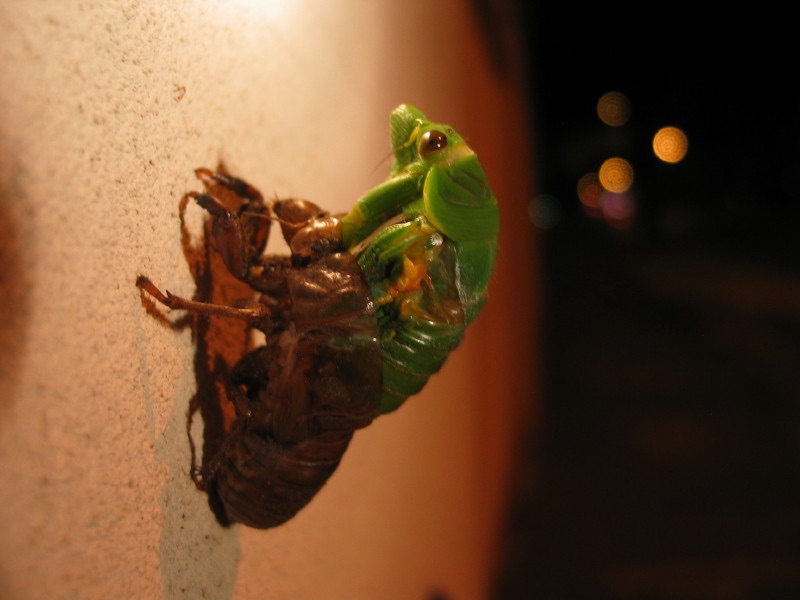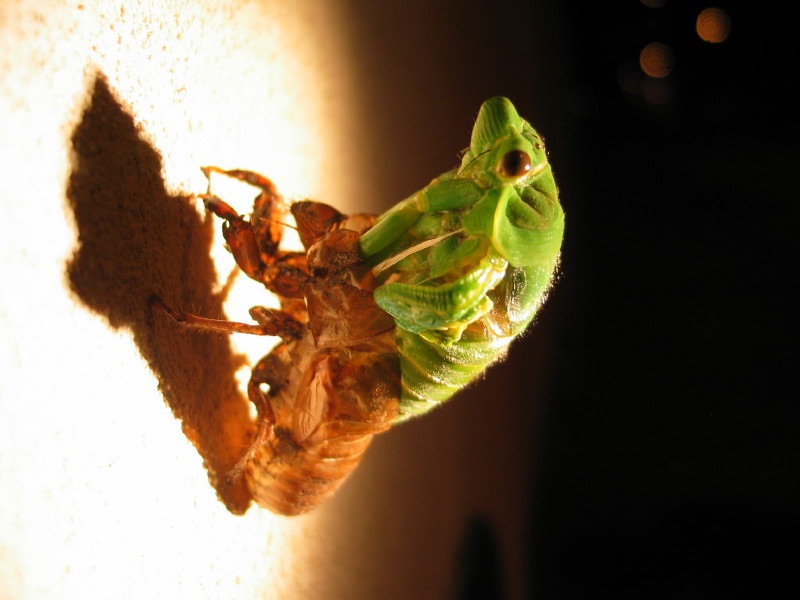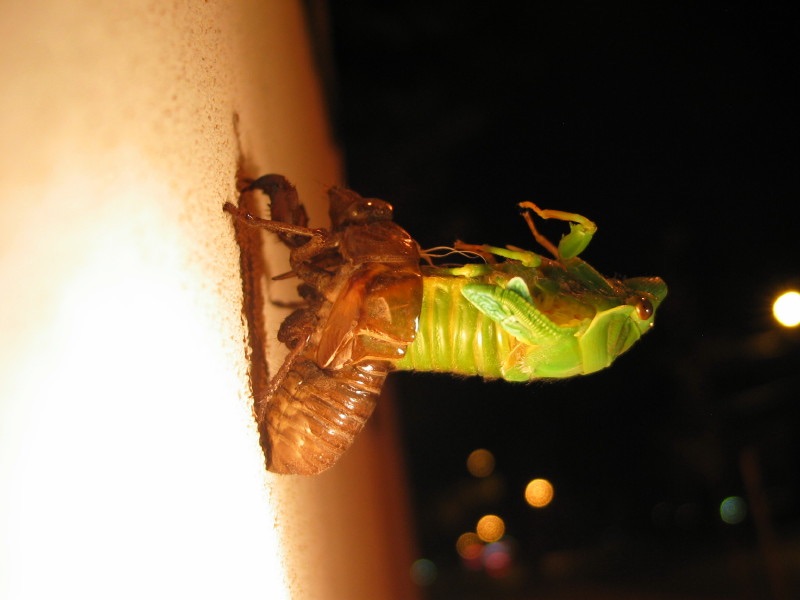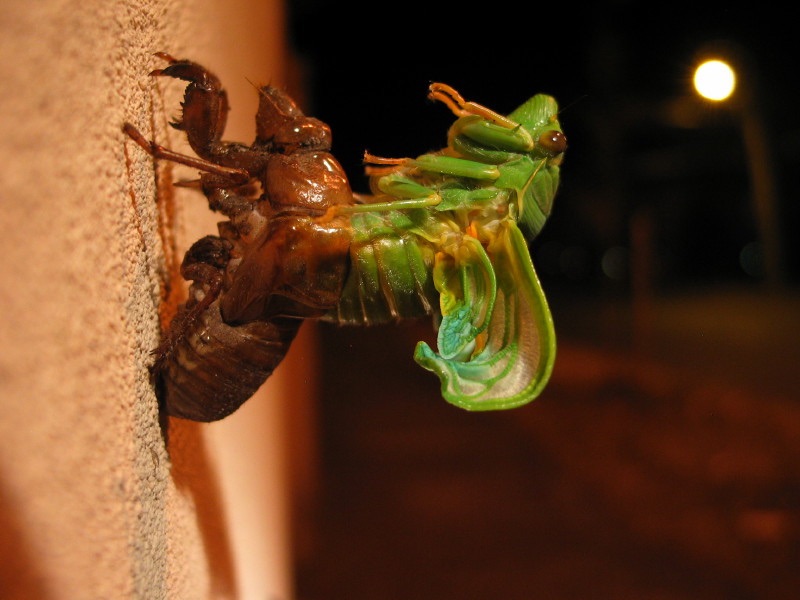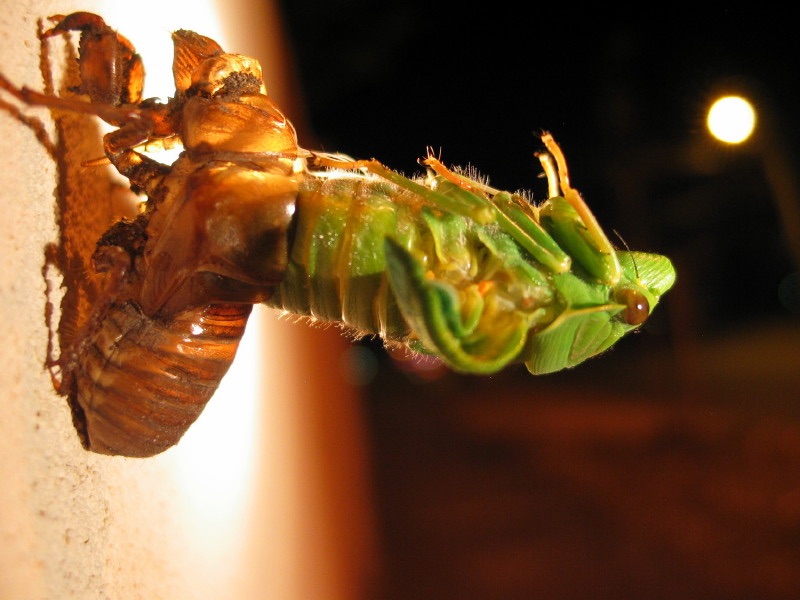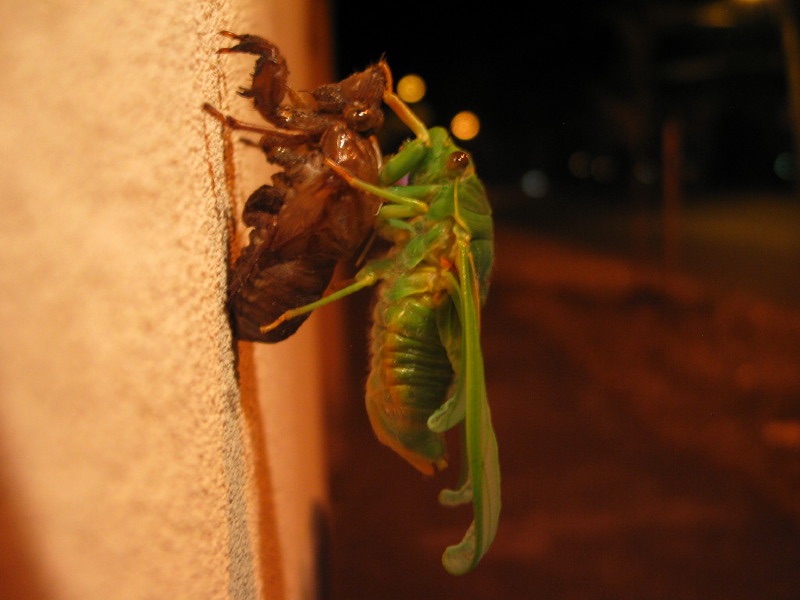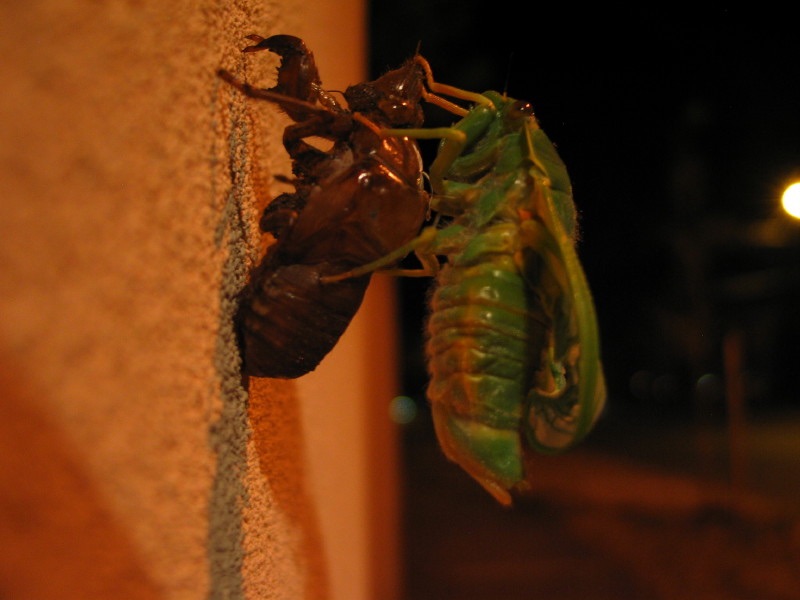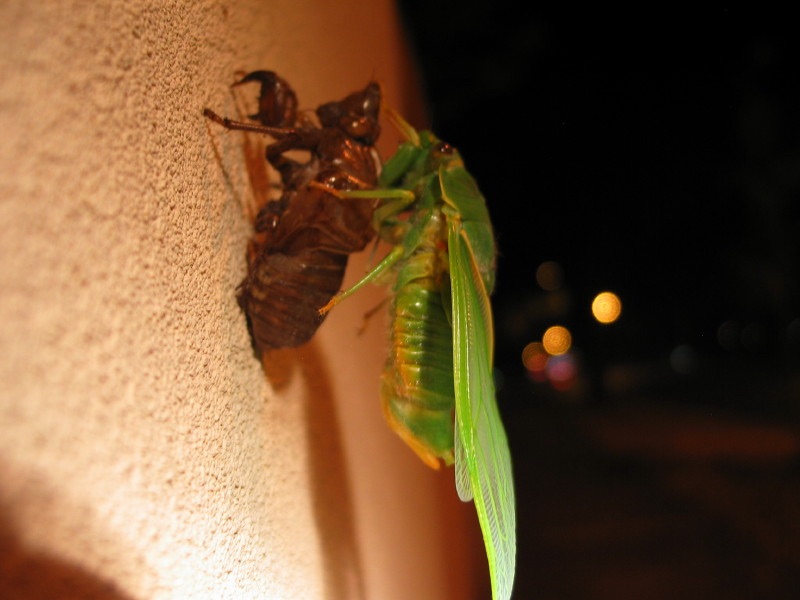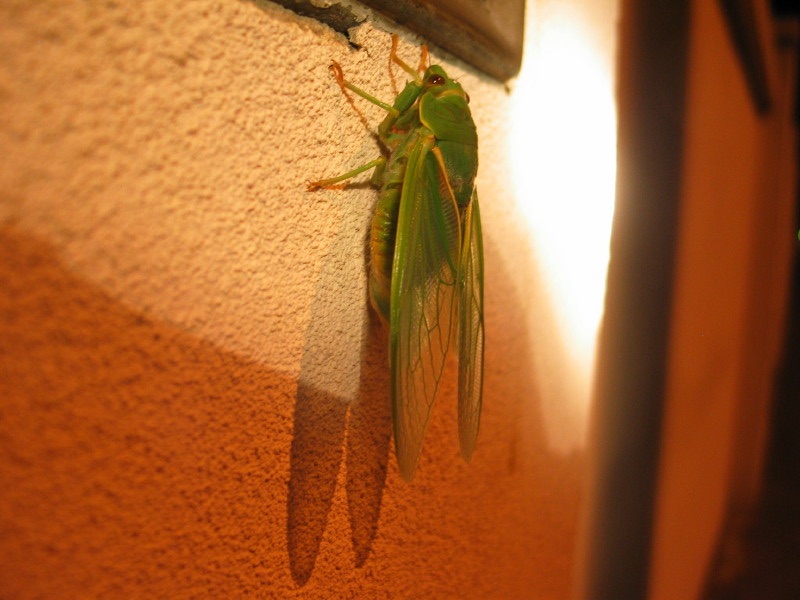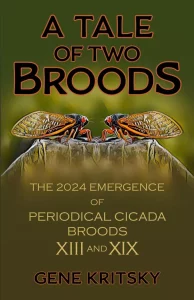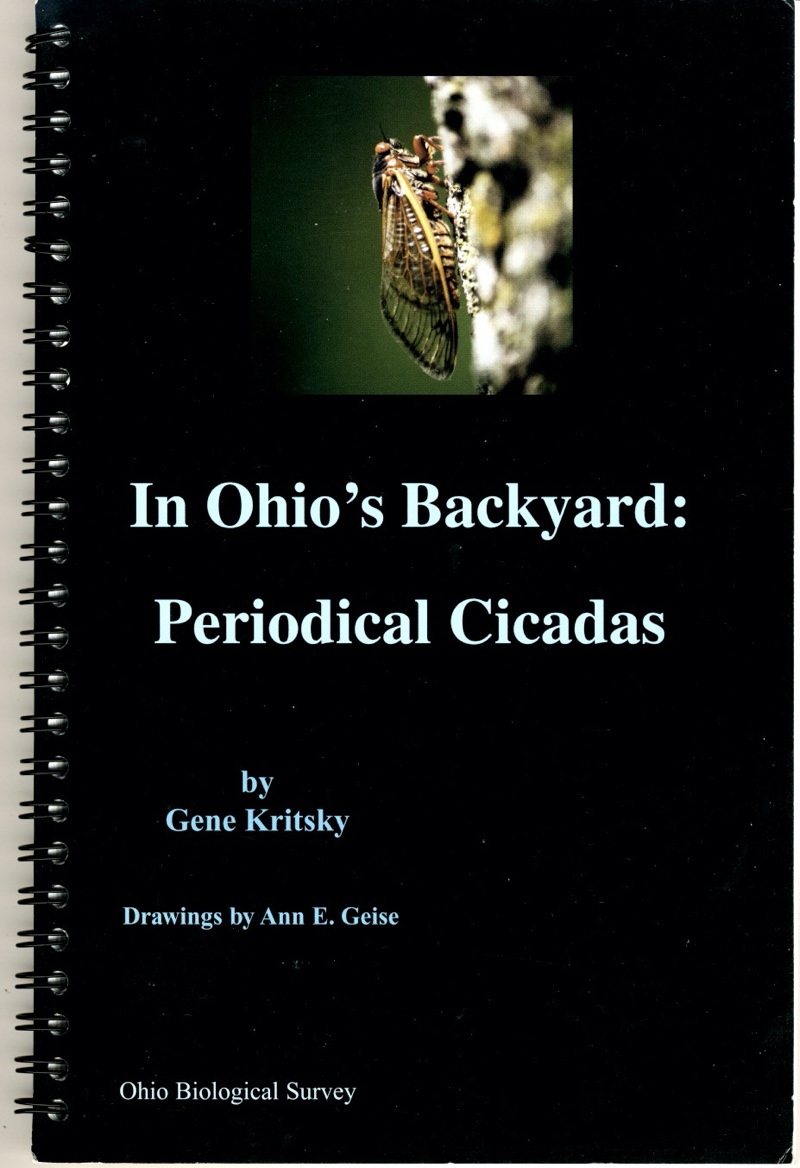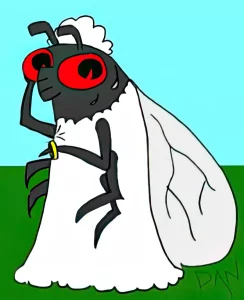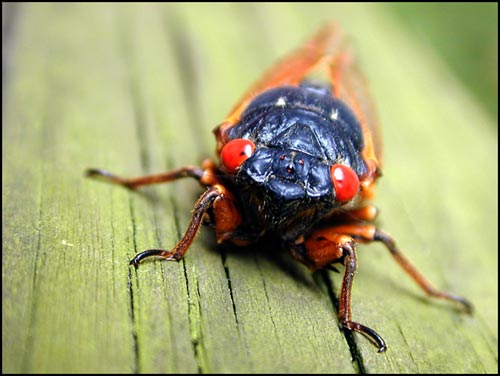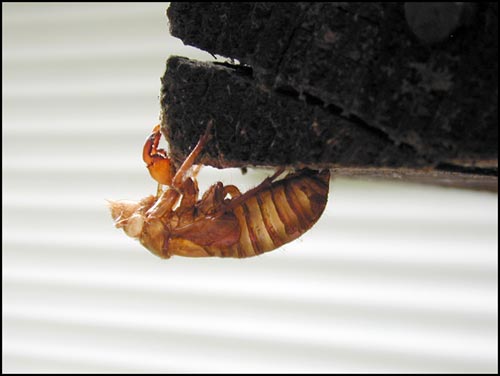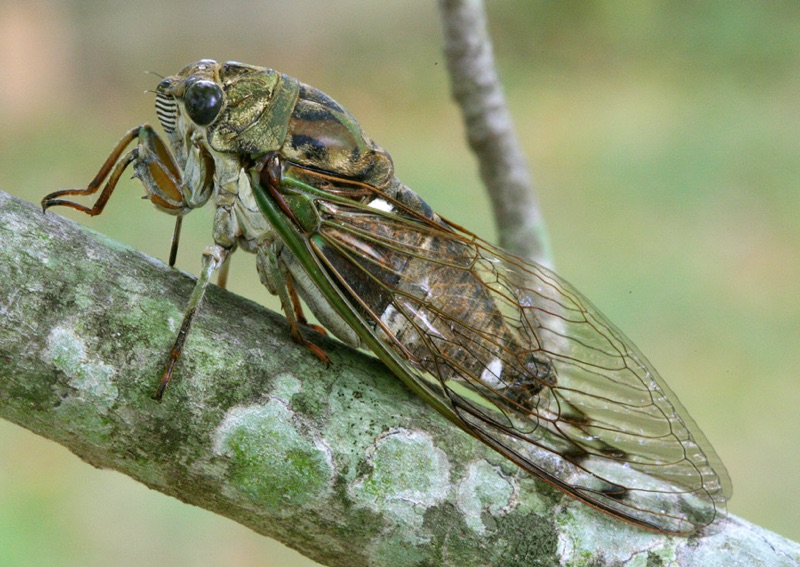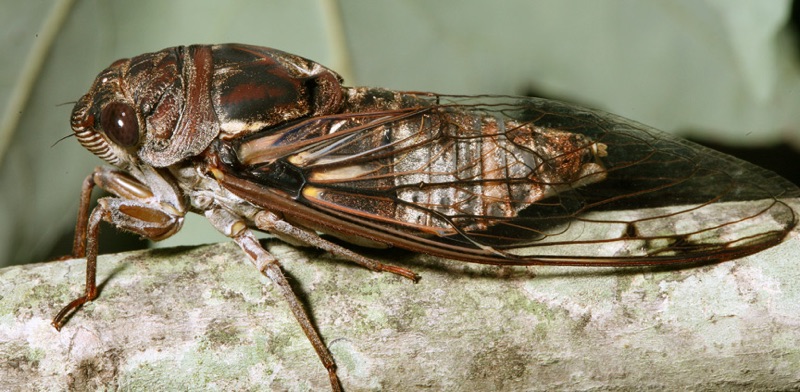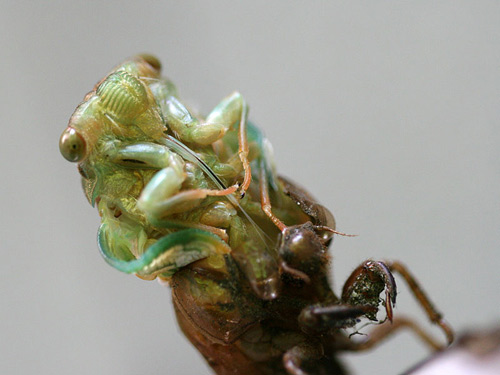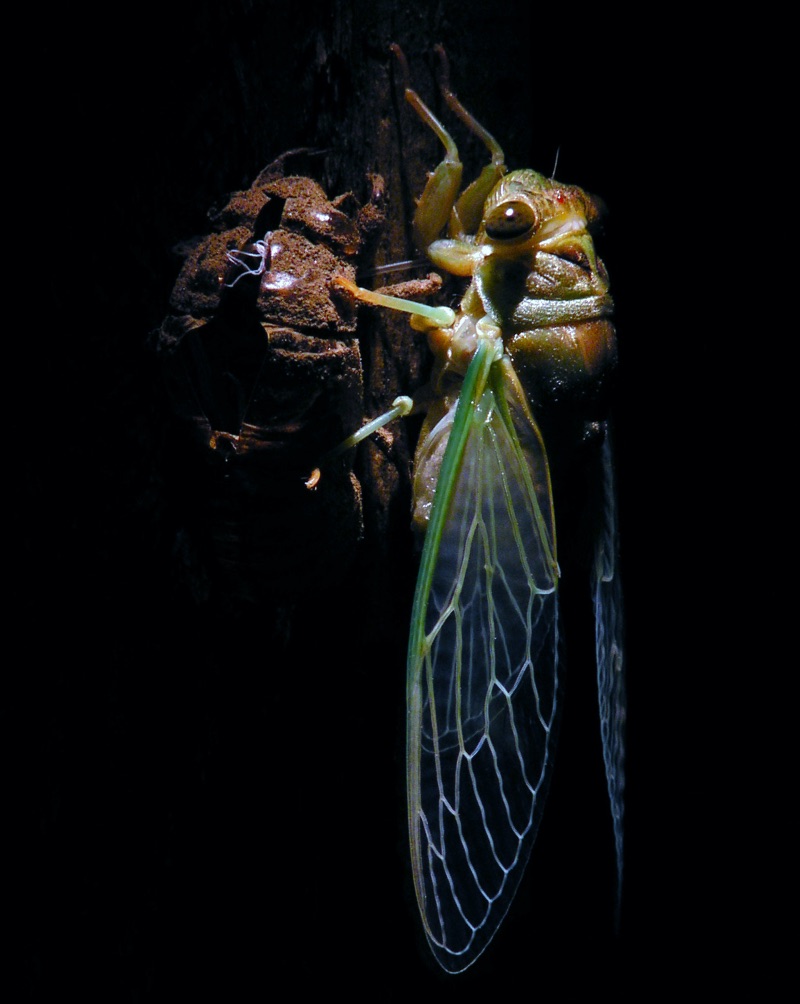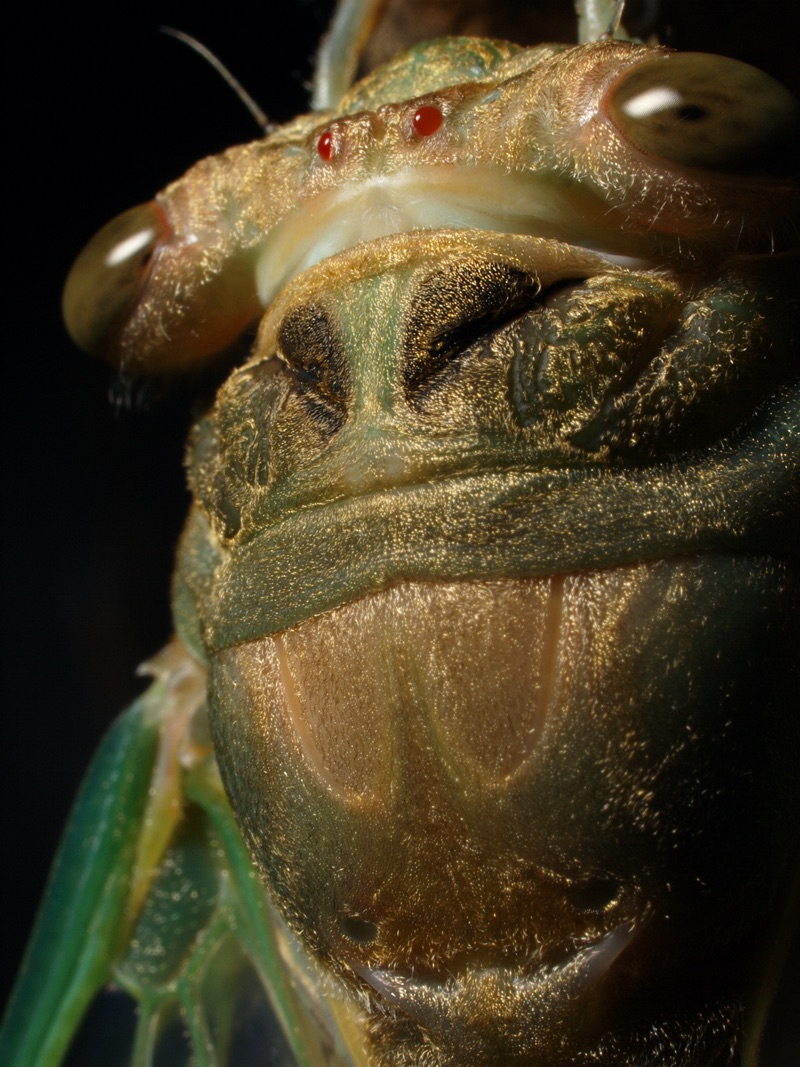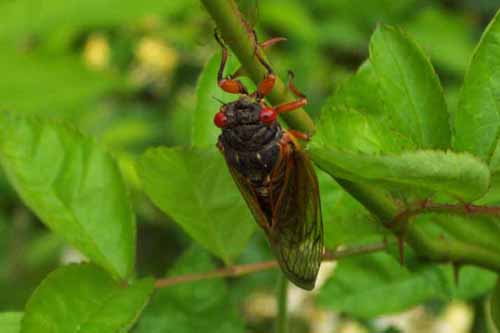1996 was the year I started this site, and the year I discovered the 17-year cicada. This is my cicada diary from 1996:
- Sunday, May 19th: Metuchen, New Jersey; I found the first desiccated cicada nymph exoskeleton on my patio. My cat disappears.
- Tuesday, May 21st: I found about 40 nymph exoskeletons on my patio, a pine tree and a maple tree. I also spotted an adult climbing the maple and two crippled adults rolling about the base of the tree.
- Wednesday, May 22nd: Bonanza! I found about 500 adults perched on just about everything in my yard: trees, patio furniture, the foundation of my home, the garden hose, garbage cans, the missing cat’s water dish, my hair…just plain everywhere! Gruesome!
- Saturday, May 25th: Avenel, New Jersey; Party at the Ritzow’s. Literally hundreds of adult cicadas perched high above in oak trees sneer at decadent humans sipping martini’s, playing croquet. Bourgeois homosapiens…bah humbug!
- Thursday, May 30th: Metuchen, New Jersey; Still no sign of the cat. Sitting outside on my patio around 8:30pm I hear a “snap”, “crackle” and “popping” sound. Rice Crispies? No. More like cicadas nymphs crawling out of their holes and on to my garden wall to molt into adult hood. Not the loveliest sight.
- Saturday, June 1st: Westfield, New Jersey; Dave Wilson and Claire Adas’ wedding. A beautiful ceremony and reception, with the exception of the 9000 uninvited cicadas: crawling up peoples legs, crunching underfoot, landing in refreshments…a moment to cherish and remember!
- Tuesday, June 4th: North Edison, New Jersey; The cicadas have begun to sing! All together they sound like a Boeing 767 is circling 40 feet overhead. The sound is that awesome. 10 inch deep piles of dying post coitus adults litter the base of trees. The invasion has only begun!
- Wednesday, June 5th – Monday, June 17th: Metuchen, North Edison, Colonia, Avenel, New Jersey; The invasion is in full effect! Home owners in North Edison and Colonia report having to haul away the dying bodies of cicadas in wheelbarrows! Residents describe the cicadas’ combined mating screams as “loud as a UFO” [how do they know what a UFO sounds like?] and “like a Mack Truck was floating ten foot above your head”! Someone even told me cicadas taste like shrimp! I guess they made the best of a bad situation.
- Wednesday, June 26th: Metuchen, New Jersey; It appears the invasion is over. All that remains is the dismembered, rotting corpses and the memories, sweet, sweet, memories. But remember, They’ll be back…in the year 2013!
- Saturday, August 3rd: Metuchen, New Jersey; Looking out my second story window I can clearly see the damage done by the 17-year cicadas. Brown patches of dead leaves speckle local oak and maple trees, revealing the branches where the female cicada has chosen to lay her eggs; an interesting “natural disaster”, but, not as heart-breaking as an earth quake or a flood. Clearly the most provocative news regarding cicadas is the current hatch of annual cicadas, which are larger than the “17-year” cicadas (thoroughly illustrated within this web page) and greener. Another dissimilarity is the difference in their respective mating calls: while the “17-year” cicada makes a whirring sound somewhere between the motor of a vacuum cleaner and a car alarm, the “annual” cicada sounds more like a lawn sprinkler or maybe a sewing machine. Although I can clearly hear hundreds of “annual” cicadas and I have found their shells, I haven’t visually located a single one ! Another cicada related event has been the recent hatch of “cicada killer” wasps. These two-inch long giant wasps only prey upon, our friend, the defenseless cicada. I haven’t located these creatures either, but, they are definitely out there. Cicadas beware!
- Wednesday, August 26th: Metuchen, New Jersey; the Tibicen cicadas continue to sing…
- Wednesday, November 6th: Metuchen, New Jersey; they are all dead or sucking on roots underground.
